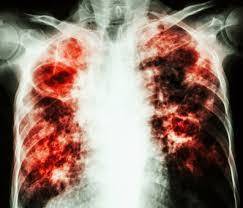Tuberculosis: A Global Health Concern.
Introduction
Tuberculosis (TB) is a serious infectious disease caused by the bacterium Mycobacterium tuberculosis. It primarily affects the lungs but can also spread to other parts of the body, including the kidneys, spine, and brain. Despite being preventable and curable, TB remains a major public health issue, particularly in developing countries.
Causes and Transmission
TB is transmitted through the air when an infected person coughs, sneezes, or speaks. The bacteria can remain in the air for several hours, making it highly contagious in crowded or poorly ventilated areas. However, not everyone exposed to TB bacteria develops the disease. Some individuals may have latent TB infection (LTBI), where the bacteria remain dormant in their bodies without causing symptoms. LTBI can later become active TB if the immune system weakens.
Symptoms of Tuberculosis
TB symptoms vary depending on the affected organs, but the most common signs of pulmonary TB (affecting the lungs) include:
- Persistent cough lasting more than three weeks
- Coughing up blood or sputum
- Chest pain
- Unexplained weight loss
- Fever and night sweats
- Fatigue and loss of appetite
For extrapulmonary TB (affecting other organs), symptoms depend on the location. For example, TB of the spine can cause back pain, while TB of the kidneys can result in blood in the urine.
Diagnosis and Treatment
TB is diagnosed using several methods, including:
Tuberculin Skin Test (TST) – A small injection under the skin to check for an immune reaction.
Interferon-Gamma Release Assays (IGRAs)Blood tests that detect TB infection.
Chest X-rays and CT Scans – Used to check for lung abnormalities.
Sputum Culture and Microscopy Identifies TB bacteria in respiratory secretions.
Treatment for TB involves a combination of antibiotics taken for at least six months. The most commonly used drugs include:
Isoniazid (INH)
Rifampin (RIF)
Ethambutol (EMB)
Pyrazinamide (PZA)
Patients must complete the full treatment course to prevent the development of drug-resistant TB, which is much harder to treat.
Drug-Resistant Tuberculosis
One of the biggest challenges in TB control is the emergence of multidrug-resistant tuberculosis (MDR-TB) and extensively drug-resistant tuberculosis (XDR-TB). These forms of TB occur when patients do not complete their treatment or when the bacteria become resistant to standard medications. Treating drug-resistant TB requires stronger antibiotics over a longer period, often with severe side effects.
Prevention and Control
Preventing TB involves several strategies:
BCG Vaccine – Given to infants in high-risk areas to protect against severe TB forms.
Infection Control Measures Proper ventilation, wearing masks, and isolating infectious patients.
Screening and Early Detection Identifying and treating TB cases before they spread.
Conclusion
Tuberculosis remains a significant global health challenge, especially in low-income countries. With proper diagnosis, treatment, and prevention strategies, TB can be controlled and eventually eliminated. Raising awareness and ensuring access to healthcare services are crucial in the fight against this deadly disease.


